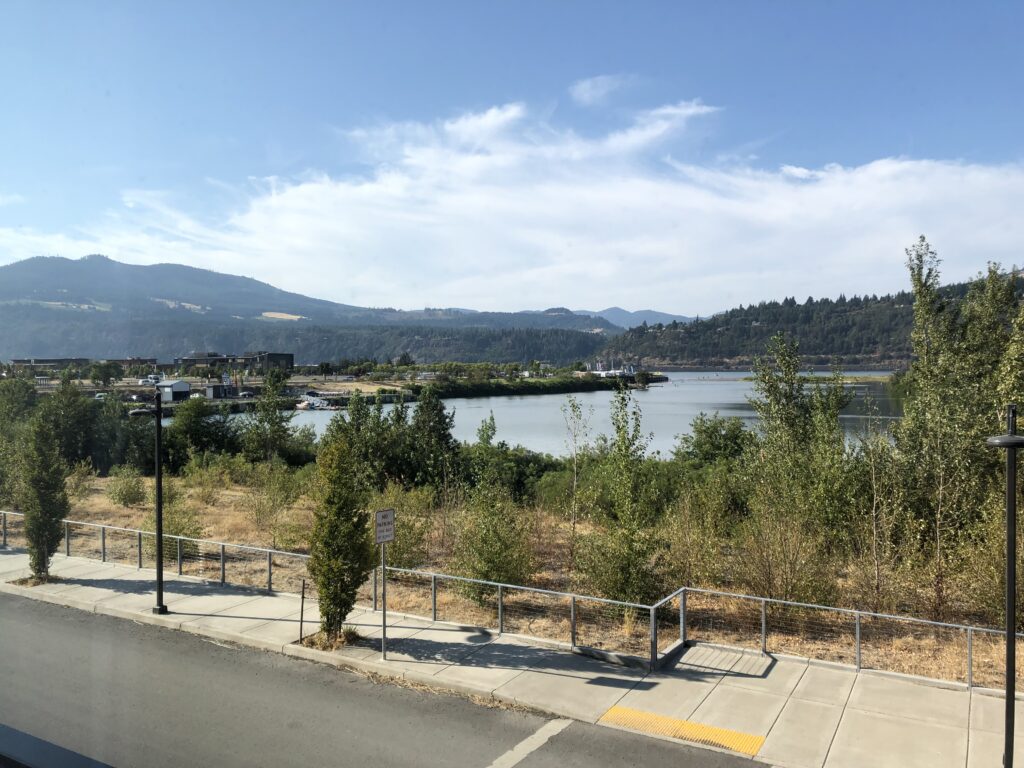Since my last update, I feel like I’ve been able to grow significantly within my environmental knowledge as well as gaining several practical professional skills. As my fellowship is coming to an end, I’ve not only had the chance to look at all the work I’ve completed, but also get to look where I’m going next.
B Corp
Ever since figuring out what a B Corporation was, I knew that I wanted to work for one. Whether that was a business that was already certified or a company looking to become certified, I knew that the requirements for a B Corp certification aligned with my own values and vision for the future of business.
I was excited when I learned that Tofurky was a B Corp because it was like a cherry on top of a business that I believed was already doing so much for the environment. Tofurky was first certified in 2017 as a B Corp and as a requirement, it is required to recertify every 3 years. While there was a team assembled and ready in both 2020 and early 2021 to complete the recertification, we didn’t end up getting any word until 2022. This meant that as the sustainability person at the company, I got to help with the entirety of the environmental section. I’ve previously looked through B Corp’s Impact Assessment but this time I was able to actively enter all the work that our company and I have been doing.
I think going through this process of recertification was insightful and made me appreciate the certification and its value so much more. Several times during our verification stage, we were required to show proof of certain practices and behaviors at the company. This meant that we needed to not only confirm the practices we have, but also show the formal written policy for each one.
Career Development
One of the most exciting parts of my work recently has been looking at where I want my career path to go. I know I want to stay within sustainability at businesses, possibly even manufacturing companies, but now I see so many more options for where I can specialize. Two of the most enticing paths right now are moving towards being a sustainability analyst or gaining some knowledge on process engineering.
I really like the idea of being a sustainability analyst mostly because I have enjoyed working with data at Tofurky. Since beginning my fellowship, I’ve keeping track of and working with the company’s utility and waste data. Over time, I’ve discovered better ways to not only model and present the data, but ways to overlay that data to make it more useful. One of the biggest changes that we’ve made is looking at the data from an intensity perspective. This allows us to look at how we’re doing while still accounting for growth.
Process engineering is another interesting path because it would give me the tools to make the change that I want to see in companies. Right now, I have some difficulties being able to make changes at Tofurky purely because I don’t have the background and knowledge to analyze a process and identify how we can make it more efficient. Getting further education in this would allow me to walk onto production floors, acknowledge areas for improvement, and subsequently offer solutions that we can test. As of right now I feel as if there is a large barrier to entry with this kind of work and requires further education.
I think the main reason I’m excited about both career paths is because they would give the skill sets, I need to make meaningful change at a company. Currently, I feel like there is value in learning some project and program management skills to deal with work, but there’s something missing when it comes to making change. That missing piece comes in the form of having the right people or information. Without having someone specialized in process engineering, there is a gap in our capability to drive change. While it would be nice to simply have someone else with these skills on the team, I’ve learned I feel most comfortable as a team member when I have some shared knowledge with those I’m working with.
Program Management
One of the biggest changes that has occurred in the new year is within the management of our sustainability program and the work that we are doing. I’ve struggled a lot in this experience with finding an effective way to work that not only establishes clear objectives, but also works for our diverse set of departments. Initially, most of the work we were doing revolved around a monthly meeting with occasional check-ins in between, but there were problems with this. While I and several others believed our monthly meetings were meant to function as working meetings, others in the group viewed it simply as a time for reporting progress. This breakdown in communication and understanding showed me that I needed to restructure the way we work.
The solution was transitioning over to a more formal program structure. This involved not only a steering committee/executive sponsors, but functional teams that each have their own meeting cadence, goals, and work structure. Already, this has felt way more productive and functional than the previous ways we were working. This has also allowed me to gain some valuable project and program management skills that I’ll be able to use in the future.





